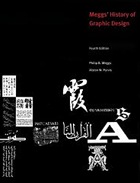References?
Christine asked me about references for the history part of the type poster. I think you should make notes but I won't be asking you to add the reference material to the overall design. If you would like to include it in your design that is fine but you might want to know where you came across the info for future reference. Also internet research is fine just make sure it is from a credible site. Options for finding info on designers and typeface history can be found at fontfont.com and fontshop.com.
And just so you can get a sense, this is what I did for my Typebook (a variation of the type poster) in undergrad. This is by no means an indication of what your solution should look like, I just wanted to share the abstract page which is the third page. Your project can use actual words or solely letterforms. Whichever you feel best expresses the character of your typeface.

Christine asked me about references for the history part of the type poster. I think you should make notes but I won't be asking you to add the reference material to the overall design. If you would like to include it in your design that is fine but you might want to know where you came across the info for future reference. Also internet research is fine just make sure it is from a credible site. Options for finding info on designers and typeface history can be found at fontfont.com and fontshop.com.
And just so you can get a sense, this is what I did for my Typebook (a variation of the type poster) in undergrad. This is by no means an indication of what your solution should look like, I just wanted to share the abstract page which is the third page. Your project can use actual words or solely letterforms. Whichever you feel best expresses the character of your typeface.



